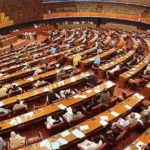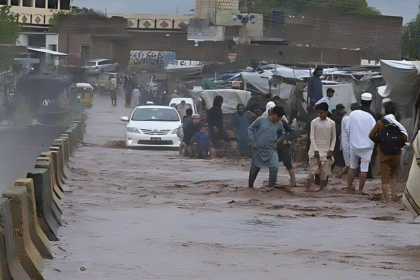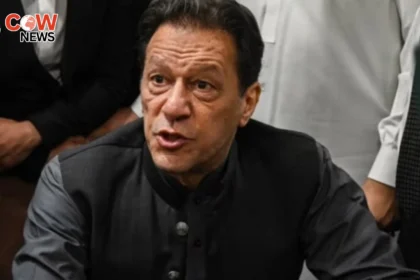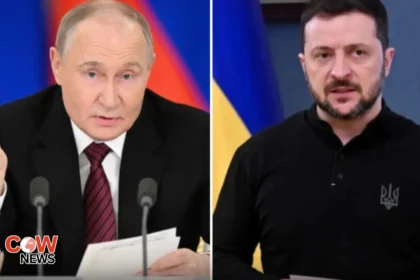In a decisive move to maintain public order, the Punjab government has implemented Section 144 across several cities, including Lahore, in anticipation of a planned protest by the Pakistan Tehreek-e-Insaf (PTI) party. This legal measure is part of the government’s broader strategy to ensure peace and prevent disruptions amid rising political tensions in the country. With the imposition of Section 144, law enforcement agencies have mobilized extensive security measures to safeguard public safety, a decision that has drawn a variety of responses from the public and political spheres.
Understanding Section 144
Section 144 of the Code of Criminal Procedure in Pakistan is a legal provision that empowers local authorities to prohibit the assembly of four or more people in a specified area. This regulation is often invoked during times of heightened tension, political unrest, or when there is a perceived threat to public safety. The overarching goal of imposing Section 144 is to prevent disorder and maintain peace, particularly in situations where protests could escalate into violence.
The imposition of this section in Lahore and other cities, including Rawalpindi, Attock, and Sargodha, reflects the government’s anticipation of possible unrest during the PTI protest. In Lahore, the restrictions will be effective from October 3 to October 8, while in other cities, they will remain in place until October 6.
The Context of the PTI Protest
The PTI, led by former Prime Minister Imran Khan, has a history of organizing large-scale protests to voice opposition against the current government and its policies. The party has mobilized significant public support in the past, and its protests have often attracted considerable media attention. The recent decision to hold a protest is seen as a critical moment for the party, as it seeks to galvanize support amid political challenges and controversies surrounding the current administration.
Political analysts suggest that the upcoming protest is a crucial opportunity for the PTI to showcase its strength and mobilize its base. However, the government’s preemptive measures highlight the delicate balance between maintaining public order and allowing political expression in a democratic society. The authorities’ concerns regarding the potential for violence are rooted in recent events, where protests have escalated into riots, leading to clashes between activists and law enforcement.
Security Measures Implemented
In response to the imposition of Section 144, law enforcement agencies have adopted a multi-faceted approach to ensure security during the planned protest. The Lahore police, led by Deputy Inspector General (DIG) of Operations Muhammad Faisal Kamran, have emphasized the importance of strict enforcement of the regulations. DIG Kamran held a meeting with senior police officials, reiterating that any attempts to disrupt public peace would be met with zero tolerance.
Mobilization of Police Forces
To manage potential unrest, police teams have been mobilized to monitor sensitive areas throughout Lahore. The police force has increased its presence in key locations, ensuring that officers are deployed to areas that have historically been flashpoints for protests. The strategic positioning of law enforcement aims to deter any attempts at disruption and respond swiftly to any emerging situations.
In a notable shift from typical security protocols, the Anti-Riot Force has been designated to handle crowd control instead of armed police squads. This change in approach seeks to manage potential unrest while minimizing the risk of violence. The Anti-Riot Force is specially trained to handle large gatherings and diffuse tensions without escalating confrontations. Additionally, the police have stationed prisoner vans and extra personnel at crucial points to ensure rapid response capabilities.
Monitoring Sensitive Areas
Sensitive areas such as hospitals, schools, commercial centers, and public places are under heightened surveillance. The Lahore police have emphasized the importance of maintaining order in these critical locations to prevent unrest that could endanger public safety. This proactive stance aims to reassure citizens that their safety is a priority, even in the face of political demonstrations.
Moreover, police have reported a significant number of arrests of PTI activists in the lead-up to the protest. These arrests are part of a broader crackdown on individuals believed to be involved in previous violent incidents, including the riots that erupted on May 9. The government’s firm stance on preventing violence reflects its commitment to maintaining public order and stability.
Closure of Entry Points
As part of the security measures, the Lahore police have sealed off entry and exit points to the city using shipping containers. This method serves to block potential protesters from entering Lahore, effectively restricting the movement of PTI supporters who may seek to join the demonstration. This drastic measure aims to prevent the assembly of large crowds that could lead to confrontations with law enforcement.
The use of shipping containers to seal off roads has become a common practice in Pakistan during times of political unrest. While effective in controlling access, it also raises concerns about the implications for citizens who may need to travel for legitimate purposes. Local residents have expressed frustration over the inconveniences caused by road closures, highlighting the tension between security measures and the public’s right to free movement.
Reactions from Political Parties and Civil Society
The imposition of Section 144 and the extensive security measures have elicited a range of reactions from political parties, civil society, and the general public. Supporters of the PTI argue that the government’s actions represent an infringement on their democratic rights to protest and express dissent. They contend that peaceful demonstrations are essential for a healthy democracy and that the government should facilitate, rather than hinder, political expression.
PTI’s Response
PTI leaders have condemned the government’s preemptive measures, describing them as an attempt to stifle political dissent. They have called on their supporters to remain peaceful and assert their right to assemble, despite the restrictions imposed by the government. The party’s leadership emphasizes that the planned protest is a necessary expression of public sentiment and dissatisfaction with the current administration.
In response to the crackdown on activists, PTI has urged its supporters to mobilize and peacefully gather in defiance of Section 144. The party’s message focuses on resilience and determination, aiming to inspire its base to participate in the protest despite the government’s efforts to suppress it.
Civil Society Perspective
Civil society organizations and human rights advocates have voiced concerns over the imposition of Section 144 and the accompanying security measures. They argue that such actions undermine the fundamental rights of citizens, including the right to free speech and assembly. Activists have called for the government to respect democratic principles and allow peaceful protests to take place without undue restrictions.
The tension between government security measures and citizens’ rights is a central theme in the ongoing discourse surrounding political protests in Pakistan. Civil society’s criticism highlights the importance of protecting civil liberties, even in challenging political climates. Advocates stress the need for a balanced approach that prioritizes both public safety and the right to political expression.
The Role of Media
Media coverage plays a significant role in shaping public perception of political protests and government responses. In the lead-up to the PTI protest, news outlets have extensively reported on the imposition of Section 144 and the heightened security measures in place. This coverage informs the public about the situation and highlights the government’s stance on maintaining order.
However, the media’s portrayal of the protest and the government’s actions can also influence public sentiment. Coverage that emphasizes government crackdowns may galvanize support for the PTI, while narratives focusing on public safety may sway opinions in favor of the government’s approach. The media’s role in framing the narrative surrounding the protest is crucial in shaping public opinion and political discourse.
The Potential Outcomes of the Protest
As the PTI protest approaches, the potential outcomes remain uncertain. Depending on how the situation unfolds, several scenarios could emerge.
Scenario 1: Peaceful Protest
One possible outcome is a peaceful protest that successfully conveys the PTI’s message without leading to violence or unrest. If the protest remains calm and orderly, it could strengthen the party’s position and demonstrate its ability to mobilize support effectively. This scenario could also lead to a renewed dialogue between the PTI and the government, potentially opening the door for negotiations on key political issues.
Scenario 2: Escalation of Violence
Conversely, if tensions escalate and clashes occur between protesters and law enforcement, the situation could deteriorate rapidly. Violence could result in injuries, arrests, and significant public backlash against the government. Such an outcome would likely undermine the government’s claims of maintaining public order and could provoke further unrest across the country.
Scenario 3: Political Implications
Regardless of the immediate outcome of the protest, the event will likely have lasting political implications. A successful demonstration could reinvigorate the PTI’s political momentum, positioning the party as a formidable force in Pakistan’s political landscape. On the other hand, if the protest is met with heavy-handed repression, it could lead to widespread public outrage and further erode the government’s legitimacy.
The imposition of Section 144 ahead of the PTI protest highlights the complex interplay between maintaining public order and allowing for political expression in Pakistan. As the government implements stringent security measures to prevent unrest, the situation underscores the challenges faced by political parties and citizens alike. The upcoming protest represents a critical moment for the PTI, as well as a litmus test for the government’s commitment to democratic principles.
As Lahore braces for potential demonstrations, the eyes of the nation will be on the unfolding events. Whether the protest will lead to peaceful expression or escalate into violence remains uncertain. What is clear, however, is that the dialogue surrounding political dissent, public safety, and civil liberties will continue to evolve in the context of Pakistan’s dynamic political landscape.
#PTI #Lahore #Section144 #Protest #Pakistan #PublicSafety #PoliticalClimate #SecurityMeasures #CivilLiberties







